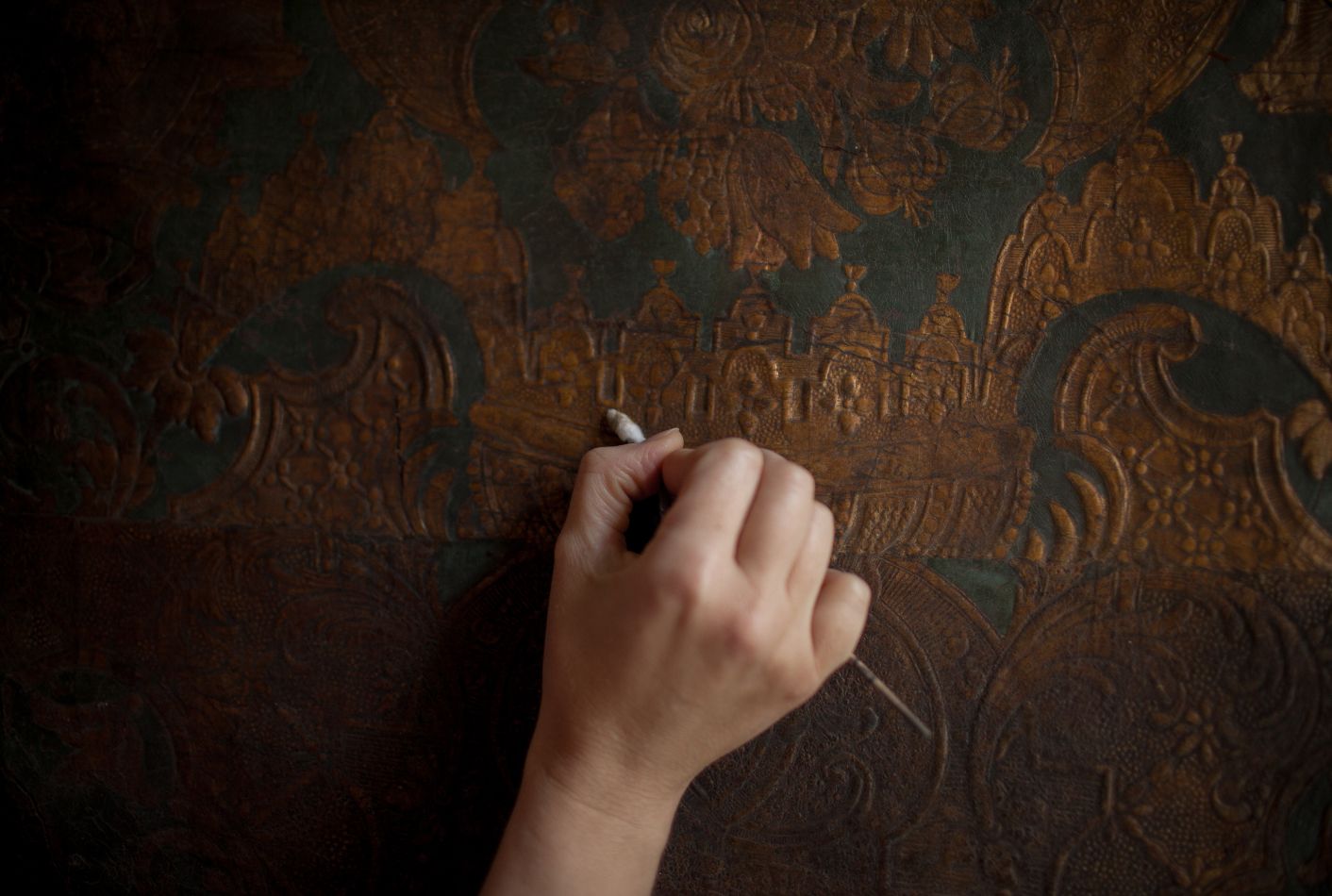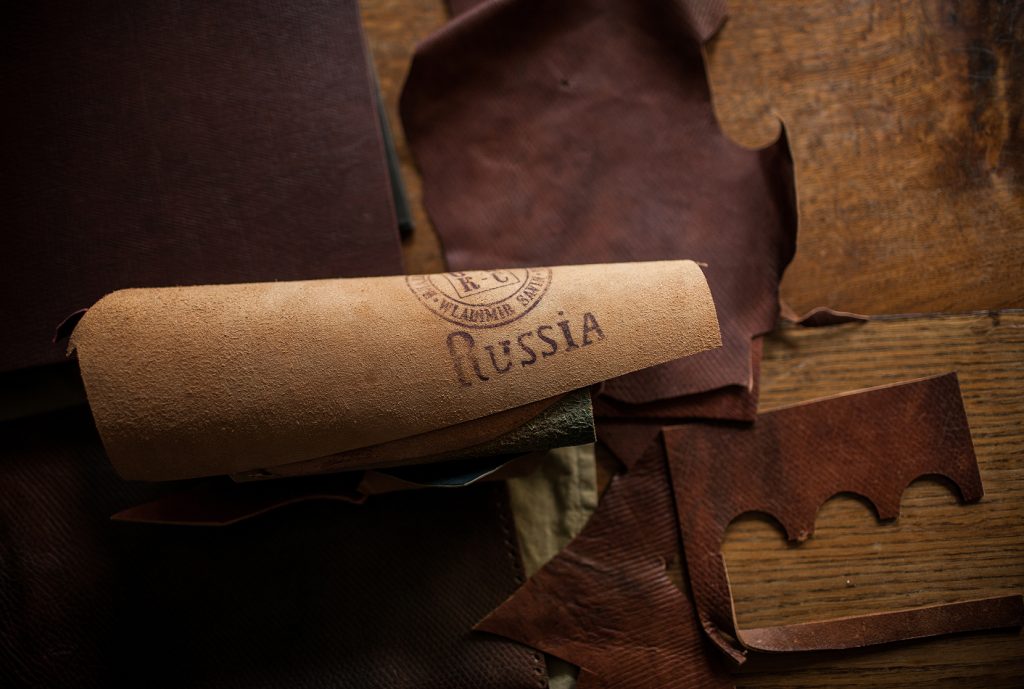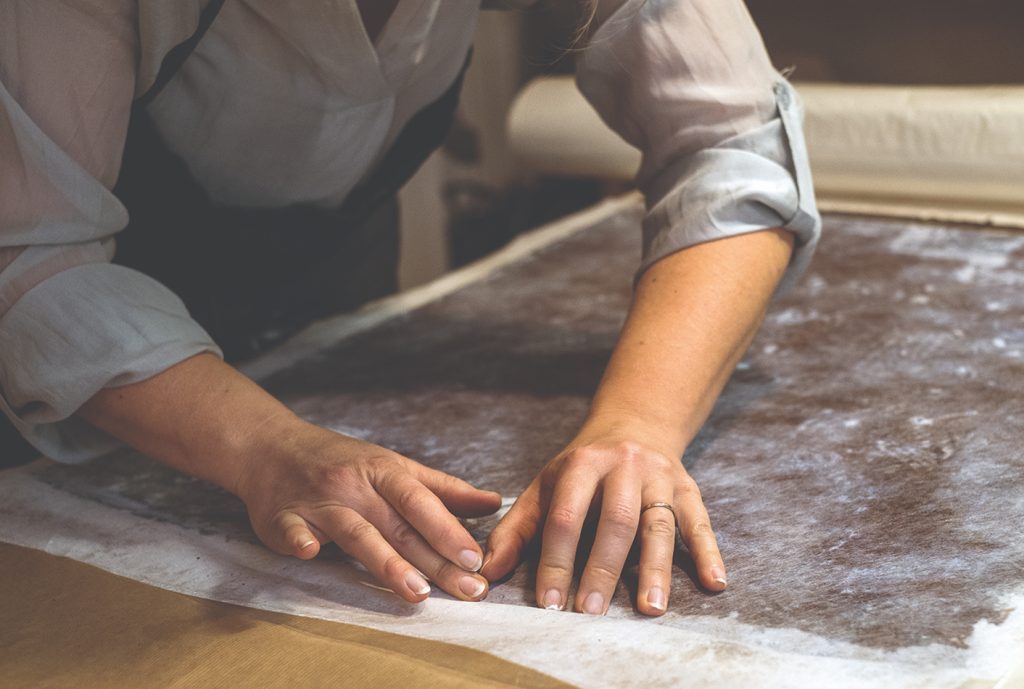Elise Blouet-Ménard: Preserving the Past. Part 2/2

For Elise Blouet-Ménard, leatherworking transcends a mere skill; it is an art form that demands patience, precision, and a deep understanding of materials. Each cut, stitch connects her to a centuries-old tradition. However, in an age of automation, she believes that the real challenge is to preserve these techniques and inspire a new generation of craftsmen. In the second part of the conversation, she discusses the unique aspects of leatherwork and emphasizes the importance of keeping its legacy alive. (Part 1 of the interview)
Rediscovering Russian Leather
Q: Elise, you have worked on many projects during your career. Which ones do you consider the most memorable or significant?
Elise:
“As a student, my tutor showed me a sample of leather that had been in a shipwreck off the coast of England for over 200 years. The leather was in perfect condition, and its woody, smoky scent was bewitching. I spent 10 years researching its recipe, which had disappeared at the time of the Russian Revolution, and working with a tanner to recreate this mythical leather. Today, this leather is used by many luxury houses to make luggage, shoes, and other everyday objects.”

Navigating the Complexities of Restoration
Q: What is your method for restoring objects of historical significance?
Elise:
“When you have a historical item in your hands, you need to define its value. This may be financial, but it may also be historical, sentimental, or technical.
There are always many emotions involved in handling an exceptional object; however, there is also a certain apprehension when it comes to working on unique and fragile items. We are simply the passers-by of heritage, and our intervention must be minimal, stable, and reversible.”
The Power of Collaboration in Conservation
Q: Could you share more information about any collaborative projects that have been particularly rewarding for you?
Elise:
“During my time at the Leather Conservation Centre, I was honoured to work on the oldest complete war saddle. Belonging to the Wallace Collection and dating from the 16th century, this composite object was a real challenge because it includes metal, leather, textiles, and sinew. We worked with a textile specialist from the Victoria and Albert Museum to identify the fibres, and a conference was organised to present the work that had been done. It’s really satisfying to be able to share our experience.”

Balancing Historical Integrity with Restoration
Q: How do you balance preserving the historical integrity of an object with the practicalities of restoration?
Elise:
“The restorer has a code of ethics. The goal is to preserve objects for future generations. Any intervention must be documented, but above all, it must not alter the integrity of the material or remove information, let alone endanger the object.
I often mention the example of leathers that are very dry and that we would like to see more supple. Excessive feeding will be dangerous for the material; the grease will remain on the surface, which will become sticky and will collect dust, attracting microorganisms. Before intervening, you must always analyse the situation and be aware of the long-term side effects.”
The Role of Research in Conservation
Q: What role does research play in your restoration work and understanding the historical and cultural context of the objects?
Elise:
“To work on an object, it is essential to understand the material. In theory, once restorers have identified the leather, how it was tanned, and how it has changed, they don’t necessarily need to know its date of manufacture or its cultural context. However, I’ve always been very curious, and I think that knowing the history and context of the object helps us to better understand it and to better understand the work we’re doing.”
The Future of Leather Restoration
Q: How do you see the future of leather restoration, particularly regarding new materials and techniques?
Elise:
“Restoration is a ‘recent’ discipline. It emerged with the creation of museums, and since then, knowledge has developed regularly. Numerous symposia and conferences are organised around the world to keep abreast of the latest discoveries. We work with both old techniques and many new materials developed specifically for heritage.”
Advice for Future Conservators
Q: What advice would you give to someone who is interested in pursuing a career in conservation and restoration?
Elise:
“Do as many internships as possible!”
Preserving the Craft for Future Generations
Q: What are your personal goals and aspirations for the future and for your work at Ateliers SP?
Elise:
“After working for 20 years as a restorer of leather and metal objects, I realised that there was an urgent need to preserve know-how. Of course, we need to preserve the objects, but we also need to take care of the craftsmen who have a rare craft that needs to be passed on so that it is not lost forever.”